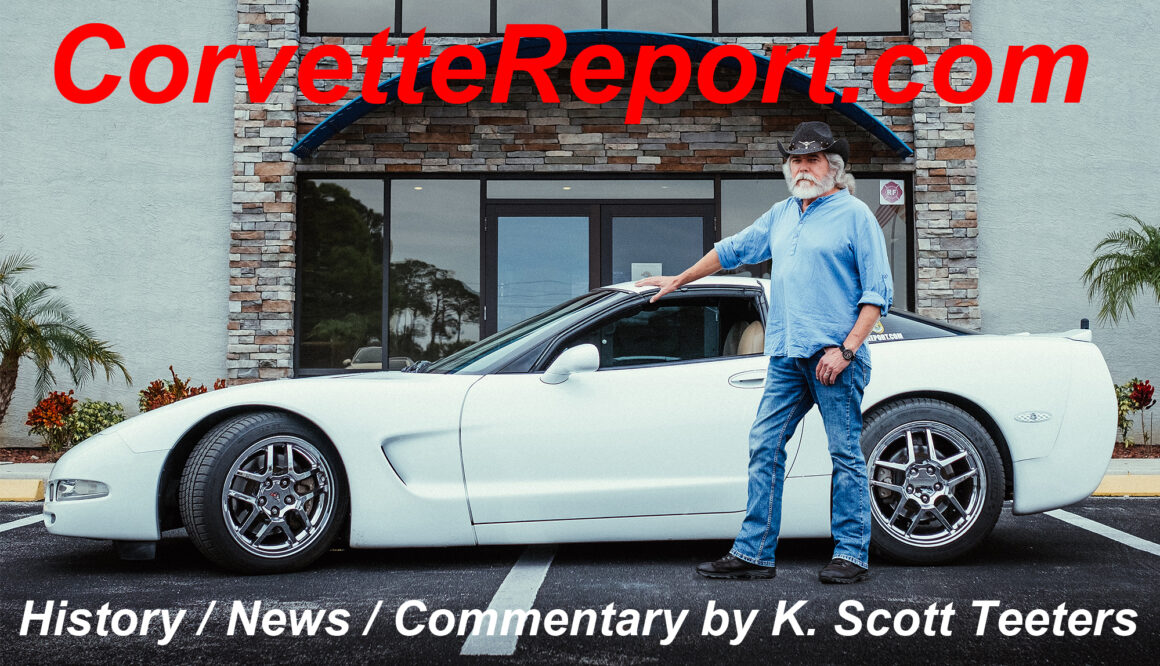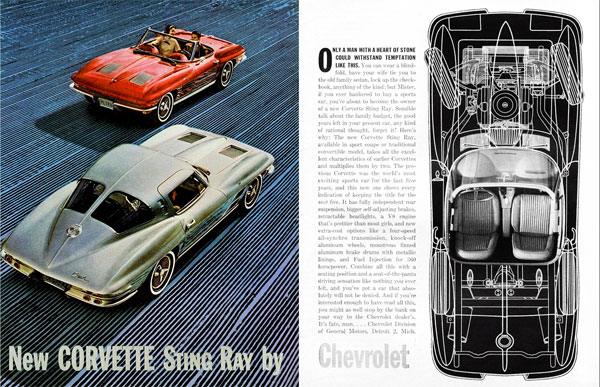Performance Bookends of the Shortest Generation Corvette, the C2 Mid-Year
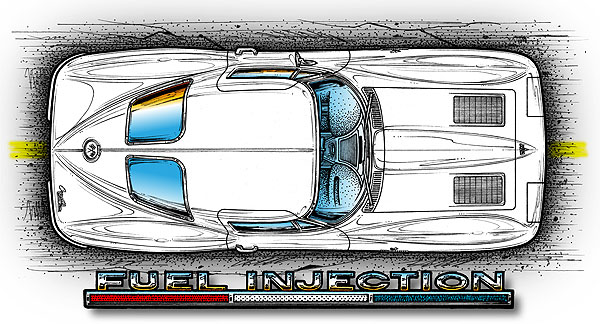 Dateline: 6.23.17 – The difference between a 1962 and 1963 Corvette is staggering. In 1963, the new Sting Ray looks like the sports car from another planet! The only carryover components used for the new Corvette were the base and optional engines. Everything else (body, interior, suspension, and frame) was all-new. The C1’s basic structure was created in 1952, and over the years was given slight tweaks, such that by the late 1950s, the Corvette was holding on against the European cars. But the new Sting Ray was a game-changer.
Dateline: 6.23.17 – The difference between a 1962 and 1963 Corvette is staggering. In 1963, the new Sting Ray looks like the sports car from another planet! The only carryover components used for the new Corvette were the base and optional engines. Everything else (body, interior, suspension, and frame) was all-new. The C1’s basic structure was created in 1952, and over the years was given slight tweaks, such that by the late 1950s, the Corvette was holding on against the European cars. But the new Sting Ray was a game-changer.
 We’re going to look back at the first and last “performance” Corvettes – the 1963 Fuelie and the 1967 L71 427/435. The Sting Ray had an all-new parameter frame that would ultimately serve as the foundation of the Corvette up to 1982! The new C2 frame allowed the passenger seats to be located “down and inside” the frame rails, unlike the C1’s frame that located the seats “on top” of the frame, thus allowing the overall design to be lower and more slender. Although the shape looked “aerodynamic, it suffered from severe “lift” at high speeds. The lift issue was a combination of the body shape, and the rear suspension “squat” upon hard acceleration – and was never really solved, just dealt with.
We’re going to look back at the first and last “performance” Corvettes – the 1963 Fuelie and the 1967 L71 427/435. The Sting Ray had an all-new parameter frame that would ultimately serve as the foundation of the Corvette up to 1982! The new C2 frame allowed the passenger seats to be located “down and inside” the frame rails, unlike the C1’s frame that located the seats “on top” of the frame, thus allowing the overall design to be lower and more slender. Although the shape looked “aerodynamic, it suffered from severe “lift” at high speeds. The lift issue was a combination of the body shape, and the rear suspension “squat” upon hard acceleration – and was never really solved, just dealt with.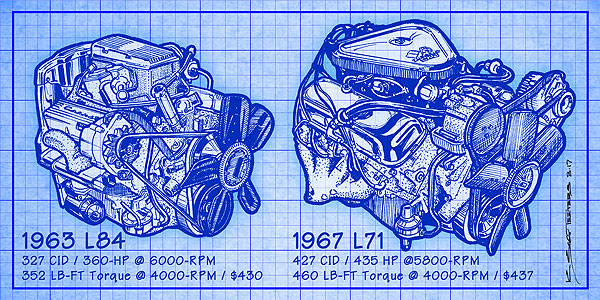 The independent rear suspension and updated front suspension made the 1963 Corvette the only American car with four-wheel, independent suspension. This was a very BIG deal then. The new interior was just beautiful. The dash had double-arches with a perfectly laid out array of the proper sports car gauges. From 1953 to 1962, the Corvette was a convertible with an optional bolt-on hardtop. The new Sting Ray was a production of Bill Mitchell’s 1959 Stingray Racer – a beautiful car with big aerodynamic problems. Instead of a convertible-only version, there was a coupe version with the now classic “stinger” design. The hidden headlights were show-car-like, and rotated horizontally along the front leading edge when the lights were turned on.
The independent rear suspension and updated front suspension made the 1963 Corvette the only American car with four-wheel, independent suspension. This was a very BIG deal then. The new interior was just beautiful. The dash had double-arches with a perfectly laid out array of the proper sports car gauges. From 1953 to 1962, the Corvette was a convertible with an optional bolt-on hardtop. The new Sting Ray was a production of Bill Mitchell’s 1959 Stingray Racer – a beautiful car with big aerodynamic problems. Instead of a convertible-only version, there was a coupe version with the now classic “stinger” design. The hidden headlights were show-car-like, and rotated horizontally along the front leading edge when the lights were turned on.
The rear glass had a split down the middle so that the crease that started at the front edge of the roof could run uninterrupted back to the end of the car. This was the infamous “split-window” that was a love-it, or hate-it detail and was Bill Mitchell’s pet design element. The split-window was gone after 1963 – making the 1963 coupes a rarity. 1963 convertibles outsold coupes, 10,919 to 10,594. Some coupe owners replaced their split-window with a 1964-1967-style rear glass!
The “racer kit” RPO Z06, was only available with the 360-horsepower, L84 Fuel Injection 327. The Z06 was all about brakes and suspension and was not worth much for street use. A maxed-out street Fuelie with all the performance and creature comforts, including air-conditioning, cost just under $6,000. Today, some split-window coupes are astonishingly expensive, depending on options and condition. A maxed out 1967 L71 427/435 cost just under $7,000. In 2017 dollars, $6,000 equals almost $48,000, and $7,000 equals just over $51,000. While these numbers are way below today’s money for a maxed out Corvette, modern Corvettes are far more complex, and overall better cars.
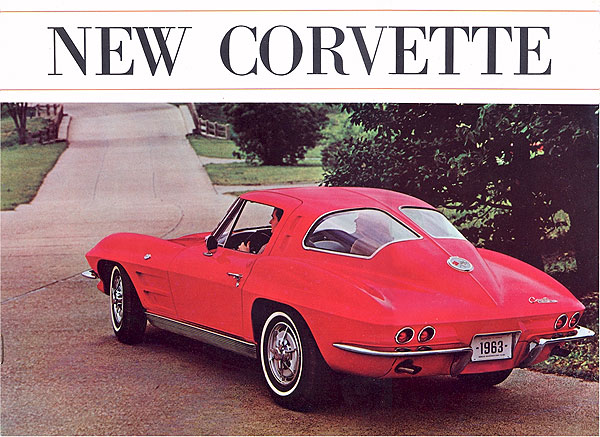
The Fuelie’s 360-hprsepower and 352-lb-ft or torque was strong, but relatively easy to handle. But in 1965 when the L79 396-CID, 425-horsepower and 415-lb/ft of torque, became available in 1965, the Corvette became a real beast. In 1966, the 396 grew into a 427, still underrated at 425-horsepower, but torque was up to 460-lb/ft. And finally, in 1967 the street 427 maxed out with the 435-horsepower and 460/lb-ft of torque L71. The 1967 Corvette is unique because it is the only C2 with the forward-slanting fide vents, Stinger big-block hood, backup lights in-between the taillights, and five-slot steel wheels with beauty rings and caps.
Opening up a 327 Fuelie is often described as, “powerful and strong.” For 1967 there were three big-block options: the $200 L36 427/390 with hydraulic lifters and one four-barrel carburetor, the $305 L68 427/400 with hydraulic lifters and 3×2 carbs, and lastly, the $437 L71 427/435 with solid lifters and 3×2 carbs. If you wanted aluminum heads, RPO L89 was another $368. And if racing was your desire, the L88 427/430-horsepower option cost $947. Mandatory with the L88 was the M22 heavy-duty, close-ratio 4-speed transmission. The L88 also included a racing suspension and brakes, and was NOT for street use. The actual unpublished horsepower of the L88 was around 525-hp, but more could be easily extracted.
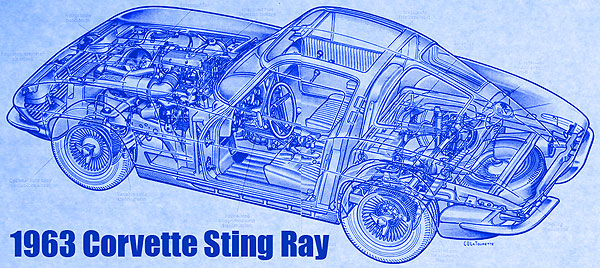 The basic structure of the Sting Ray was designed in 1960/1961 and more than adequate when maximum horsepower for the Corvette was around 290-to-315 and the torque load around 300 ft/lb. Who knew in 1960/1961 that horsepower and torque would eventually go through the hood! Engineers learned quickly that it was much easier and cheaper to make more power with “cubic-inches.” The last L84 327 Fuelie, available in 1965, made 375-horswpower and 350 lb-ft of torque for $538. The 1965 L78 396 big-block made 425-horsepower and 414- lb-ft of torque for just $292! Yes, there was a weight penalty, but 2,157 customers bought the big-block, and only 771 bought the L84 Fuelie. Would you have spent more, for less weight and power?
The basic structure of the Sting Ray was designed in 1960/1961 and more than adequate when maximum horsepower for the Corvette was around 290-to-315 and the torque load around 300 ft/lb. Who knew in 1960/1961 that horsepower and torque would eventually go through the hood! Engineers learned quickly that it was much easier and cheaper to make more power with “cubic-inches.” The last L84 327 Fuelie, available in 1965, made 375-horswpower and 350 lb-ft of torque for $538. The 1965 L78 396 big-block made 425-horsepower and 414- lb-ft of torque for just $292! Yes, there was a weight penalty, but 2,157 customers bought the big-block, and only 771 bought the L84 Fuelie. Would you have spent more, for less weight and power?
The big-block chassis was beefed-up with stronger front springs, a larger .875-inch front sway-bar, and a new .625-inch rear sway-bar. For street performance, this was more than adequate. But on the racetrack, with wider wheels and tires, things started to stress out. Racer Tony DeLorenzo shared in an interview that while racing the Owens Corning 1968 L88 Corvette, after a 12, or 24-hour endurance race, the team had to replace the frame! The remedy was a full Logghe Stamping tube frame welded to the stock frame. Massive power and torque, combined with wide racing tires was twisting the 1960/1961-designed structure. Power had out-matched the C2/C3 structure.
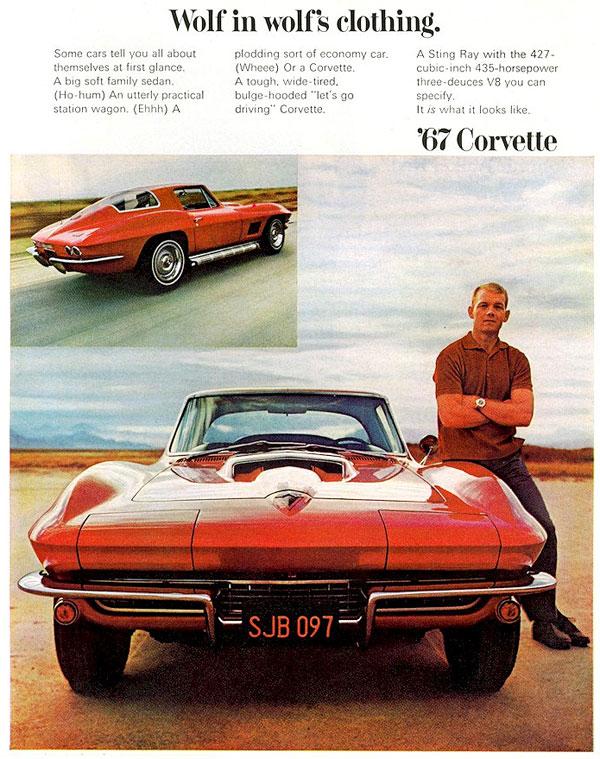 While “horsepower” is the sexy part of performance cars, the Corvette took another big step forward in 1965 with the introduction of standard, four-wheel disc brakes. “Brakes” had always been an issue for racing Corvettes. It took time to develop a disc brake system strong enough for a 3,500-car. Today, the “vented” C2/C3 brakes look as sophisticated as an anvil – but were a huge improvement over drum brakes.
While “horsepower” is the sexy part of performance cars, the Corvette took another big step forward in 1965 with the introduction of standard, four-wheel disc brakes. “Brakes” had always been an issue for racing Corvettes. It took time to develop a disc brake system strong enough for a 3,500-car. Today, the “vented” C2/C3 brakes look as sophisticated as an anvil – but were a huge improvement over drum brakes.
The shortcomings of the chassis design and aerodynamics of the C2/C3 Corvettes were never really corrected. It is too bad that the chassis wasn’t upgraded when the C3 came out in 1968. A stiffer chassis would have made for a much better Corvette. With a slight bulge on the fenders, wider tires could have fit and the front could have been lowered slightly. The 1967 Corvettes didn’t have chin-spoilers, but the 1967 Camaro did. Hood vents would have helped the lift issue too. And lastly, engineers never corrected the rear suspension “squat” that exasperated the front-end lift issue.
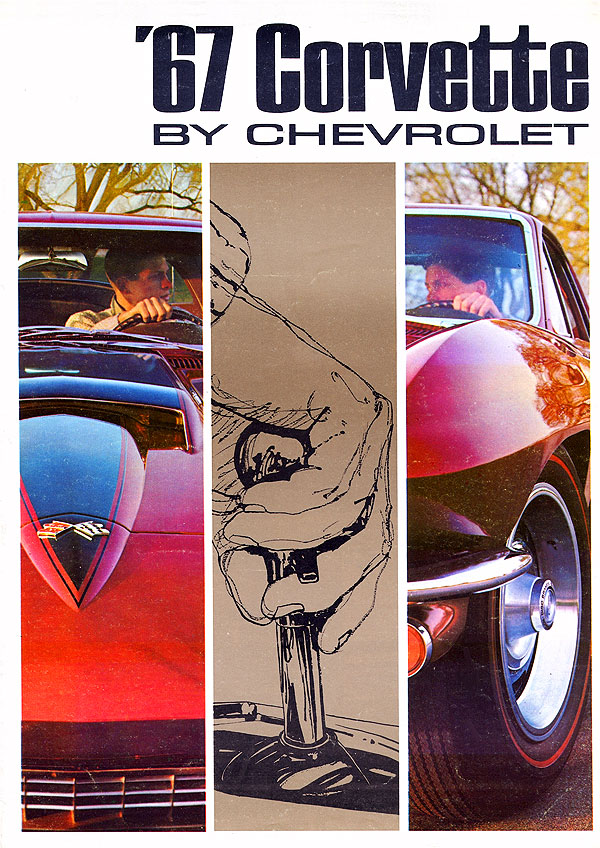 The C2, mid-year Sting Ray came in with one personality and went out with a very different one. In just five years, the performance leap was astonishing. Road & Track Magazine tested a 1963 Fuelie with 3.70 gearing and got 0-60 in 5.9-seconds, the quarter-mile in 14.9-seconds @ 95-mph, and a top speed of 142-mph. Then in 1967, Motor Trend tested a 1967 L71 427/435 Corvette and a 1967 428 Shelby Mustang. The Corvette with 3.55 gears ran 0-60 in 5.5-seconds, the quarter-mile in 13.8-seconds at 104-mph, and had a top speed of 143-mph. Fuel mileage was 9-to-12-mph! Taller gears and a hot tune would have had the Corvette into the high 12’s. The Shelby ran 0-60 in 6.2-seconds, the quarter-mile in 14.52-seconds @101-mph, and had a top speed of 120-mph.
The C2, mid-year Sting Ray came in with one personality and went out with a very different one. In just five years, the performance leap was astonishing. Road & Track Magazine tested a 1963 Fuelie with 3.70 gearing and got 0-60 in 5.9-seconds, the quarter-mile in 14.9-seconds @ 95-mph, and a top speed of 142-mph. Then in 1967, Motor Trend tested a 1967 L71 427/435 Corvette and a 1967 428 Shelby Mustang. The Corvette with 3.55 gears ran 0-60 in 5.5-seconds, the quarter-mile in 13.8-seconds at 104-mph, and had a top speed of 143-mph. Fuel mileage was 9-to-12-mph! Taller gears and a hot tune would have had the Corvette into the high 12’s. The Shelby ran 0-60 in 6.2-seconds, the quarter-mile in 14.52-seconds @101-mph, and had a top speed of 120-mph.
Playing “what if…” had there not been such a rush to get the Mako Shark-II body into production, the Sting Ray model could have carried on to 1969. This would have allowed time for structure improvements; fix the squat and front lift issue and provide a more substantial front spoiler. Sting Rays were selling well and didn’t need to be fixed.
Today, some 1963 split-window coupes command very high prices. Only 199 Z06 Corvettes were built in 1963, making restored versions extremely valuable. And only 20 1967 L88 Corvettes were built, putting them close to the top of the “most expensive classic Corvettes” list. In the 1970s, some C2 Corvettes could be purchased for as little as $3,000 – even split-window coupes and big-blocks! Who knew? Yes, the C2 Sting Ray came in like a badger and went out like a monster. – Scott
